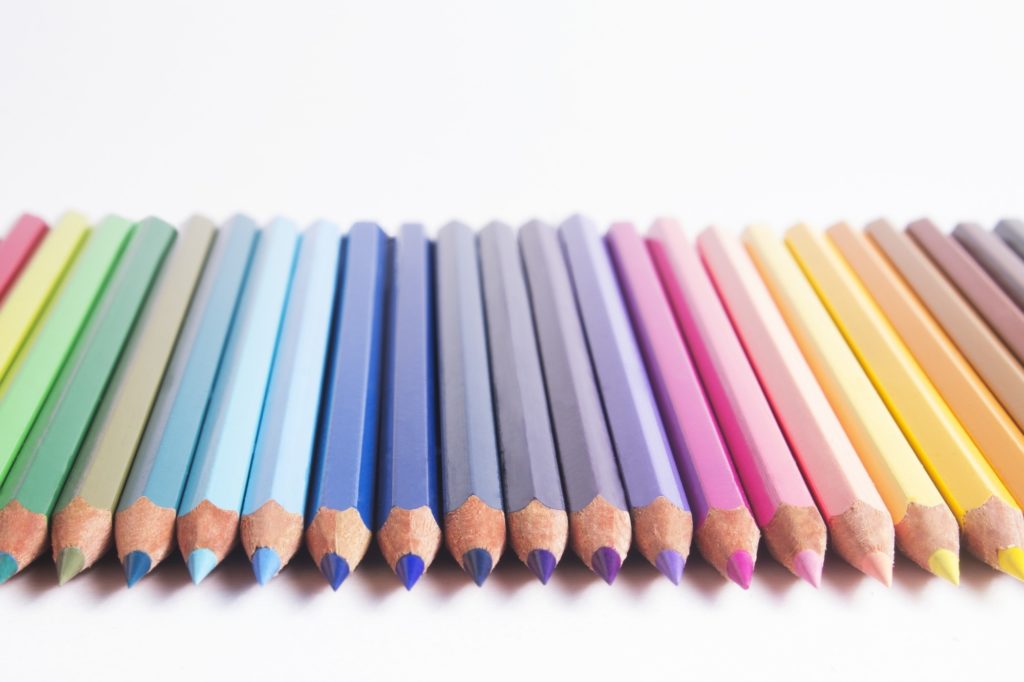Contents
A well-constructed visual interface can work wonders. In this article, you will find six ways to create an effective, attractive and engaging interface for your customers, that you can put into practice in your own projects and web sites.
1. Don’t clutter up the interface
In the 1950s, British psychologist William Edmund Hick proved that the time it takes a person to make a decision is inversely proportional to the number of choices. The more elements on the screen, the longer a person selects the one he needs.
If you provide too many options, users can get stumped.
Apply Hick’s Rule when working on your interface to strike the perfect balance, giving users the freedom of choice without overwhelming them.
By hiding secondary controls, you not only simplify the site but also make the interface more attractive.
2. Use the correct fields
An action field can be a designer’s best friend if you know how to use it.
What qualities can be used as a hint to the user so that he understands what the field is for? It can be a template icon, like a magnifying glass, for example, that denotes a search. Alternatively, you can add clickable text that says “Write a comment”.
You can divide fields into 5 types:
- Explicit — obvious clues, for example, words or pictures that show actions. Calls to action are very common.
- Template — certain icons that are used on many sites. For example, social buttons.
- Hidden — hints that pop up at certain moments — drop-down menu, icons that pop up when you hover over them with the mouse.
- Metaphorical — often combined with other types of prompts. It could be an image that offers a specific function through a metaphor. A pen icon, for example, indicates that you can enter text.
- Negative — hints that indicate that the function is not available.
3. Know which colours suit you best

Why are warning signs usually in red? Colours are chosen for a reason.
Each colour has a special effect on a person. Of course, different shades can have different effects, but the influence of the primary colours remains the same:
Red — warning, strong, passionate — stimulates blood flow when a person looks at this colour.
Orange is playful, friendly, approachable — less stimulating than red, but still very energetic.
Yellow — happiness, excitement, energy — is also often used for warning signs because it attracts attention.
Green — growth, balance, wealth — personifies harmony and connection with nature.
Blue or light blue — trust, openness, calmness — the most popular colour on the Internet, it is loved by financial companies and social media.
Purple is a mysterious, luxurious, creative — a royal colour with a shade of decadence.
White — virtuoso, sterile, simple — associated with doctors and holiness, can also serve as an unobtrusive background.
Black — sophisticated, modern, dominant — is the strongest colour that can give your website a depressing touch if overused.
4. Take advantage of blank space
It’s easy to be mistaken in thinking that a good interface means filling the screen with pretty pictures. But one of the nicest elements is emptiness.
Blank space is the absence of any elements. Take, for example, minimalistic design with the slogan “Less is More”. Once you remove the extra elements, you highlight the beauty of what remains.
Here are some ways to benefit from blank space:
Attention — the more void around an element, the more attention it will attract.
Typography — Spacing creates a hierarchy between paragraphs, lines, and even letters, improving readability and comfort.
Elegance — empty space lends a touch of sophistication and luxury.
Building relationships — leaving less space between items in the same group helps the user to better navigate the site.
White space is the same interface element as the rest. And it should be used in the design.
5. Use photos and videos of real people

The human eye is attracted to real people.
Photos and videos of people get more attention than text or any other elements.
There is only one condition — the image must be of a real person. That is, it should not be a stock photo. The photo should appear natural and unique. It must be appropriate to the way of life and appearance of the people of Australia.
Video on your website can also make wonders, but it should be a good quality video with a clear idea. Make sure that you hire a professional video production company in Sydney in order to get the best user engagement.
6. Be consistent
An attractive interface is not enough. You must also create a sequence. Consistency is only noticed when it is not there.
Inconsistent sites lead the user to a dead end. They have to deal with the interface on every page.
Pay attention to these elements:
Typography — font, sizes, spacing, and so on for each element of the text.
UI Elements — Unify a set of icons, images, and templates to help users.
Colour — By applying specific colours to specific elements, you can educate users and help them work with your site.
You should also follow the sequence in relation to other sites too.
For example, almost all sites have a logo in the upper right corner. By placing the logo somewhere else, you confuse your users.
Conclusion
User experience is a qualitative characteristic of the interaction/relationship between the user and the site. User experience is a collection of emotions, actions and results obtained by the user while interacting with the system/product/site, and our goal is to make it the best we can.



